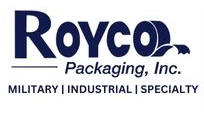In an ever-evolving world where severe consequences can occur due to equipment failure, the value of a well-protected product becomes incalculable. MIL-PRF-131K provides specifications that deliver the highest standard of protective packaging, ensuring that materials and equipment arrive undamaged, fully functioning, and ready for use. Adhering to these standards is an essential criterion for entities wishing to work with the U.S Department of Defense. But more than that, it serves as a benchmark for all that seek robust protective packaging solutions.
Get to Know MIL-PRF-131K
Despite its complex-sounding name, the importance of MIL-PRF-131K is quite simple. It is a performance specification that provides a set of standard measurements and assessments for the durability, efficacy, and longevity of packaging materials. These specifications help ensure that materials and equipment make it safely and effectively from factory to field, no matter the circumstance.
Importance and Applicability
One of the primary purposes of MIL-PRF-131K is to guard against elements, particularly moisture, that can damage or disintegrate equipment. The materials and equipment used by the military often face harsh conditions such as extreme temperatures, high pressure, or severe shocks. Thus, the packaging systems need to be robust enough to withstand these conditions to ensure that the sensitive components inside are protected.
The detailed specifications of MIL-PRF-131K serve to reduce waste, protect investments, increase product life cycles, and contribute to overall operational efficiency. Furthermore, deducing these technical standards equips us with concepts applicable in broader contexts, reaffirming the relevance of MIL-PRF-131K across a spectrum of industries and operations. It reflects the importance of quality and reliable packaging materials hence hinting towards more rigorous specifications in the years to come.
Moreover, this performance requirement is not limited only to the military. It can be applied in multiple sectors, both public and private. Any industry that requires the shipping or storage of sensitive and costly equipment can apply these standards and benefit from enhanced protection.
Classifications Under MIL-PRF-131K
MIL-PRF-131K standards classify the packaging materials into four classes - I, II, and III. The Classes are based on the type of product being packaged, the desired level of protection, and the specific preservation method used:
- Class I: Lightweight, flexible, and waterproof barrier material identified for use in situations where a high-level moisture barrier is required.
- Class II: A more rigid, water-vapor proof material containing a kraft paper lamination tailored for heavier items and for use in environments where greater structural integrity is a must.
- Class III: This class captures the most robust cloth-backed aluminum foil-based packing. It's often applied where saltwater exposure is likely or increased puncture resistance is required.
Performance and Testing
To be compliant with MIL-PRF-131K specification, a packaging material must pass various physical and environmental tests such as tensile strength, heat seal strength, and water resistance. These tests ensure that the packaging can withstand the pressure, temperature variations, and other challenging factors it may encounter during transport and storage.
Potential Applications for MIL-PRF-131K Materials
MIL-PRF-131K materials can be found serving a vast array of applications throughout the DoD and other government agencies. You'll find examples of these materials in use across numerous industries as well, offering a valuable solution to protect and preserve delicate equipment and products. Some common applications include:
- Military: The obvious application is within the military itself, where MIL-PRF-131K materials protect essential and sensitive equipment such as weapons, gear, and electronic devices.
- Aerospace: The aerospace industry also uses this type of high-quality material to secure sensitive instruments and parts during storage or transport.
- Healthcare: Many pharmaceutical items require secure packaging to extend shelf life and maintain their potency. MIL-PRF-131K materials can be instrumental in preserving these products.
- Automotive: The automotive industry uses these high-standard materials to protect delicate parts and electronic components during transport and storage.
Given the breadth of applicability and ample benefits, one could reasonably argue that understanding and applying MIL-PRF-131K specifications is a cornerstone of optimal asset management.

